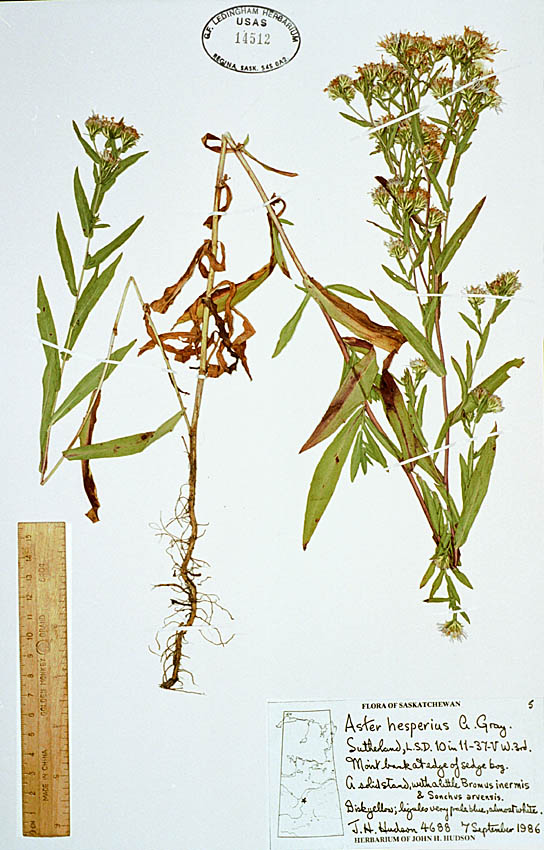
Willow Aster
Aster hesperius

Willow Aster
G. F. Ledingham Herbarium
University of Regina
Note that the key to the species in Budd's Flora requires the basal and lower stem leaves be sessile or subsessile. In fact, the lowermost leaves may be petiolate although these are often early deciduous. The keys in both Budd's Flora and Flora of Alberta require the leaves to be certain shapes (see below). In fact, the leaves vary from linear to broadly lanceolate. The key in Budd's Flora requires that the leaves usually be more than 10 mm wide. In fact, some of the leaves can be less than 10 mm wide, as some of the leaves on this site are. Budd's Flora requires that the involucre be 5-8 mm high, not 4-5.5 mm high. However, the involucre depicted in close-up photos on this site is barely more than 5 mm high. Finally, Budd's Flora requires the ray florets be blue, not white. In fact they can be white, blue, or even pink. Most commonly they are white.
|
Hesperius: Answers to key questions in Budd's Flora and Flora of Alberta leading to this species.
|
Aster: Answers to key questions in Budd's Flora and Flora of Alberta leading to this genus. The answers do not match all species of Aster found in the Canadian prairies, but they do match this species.
|